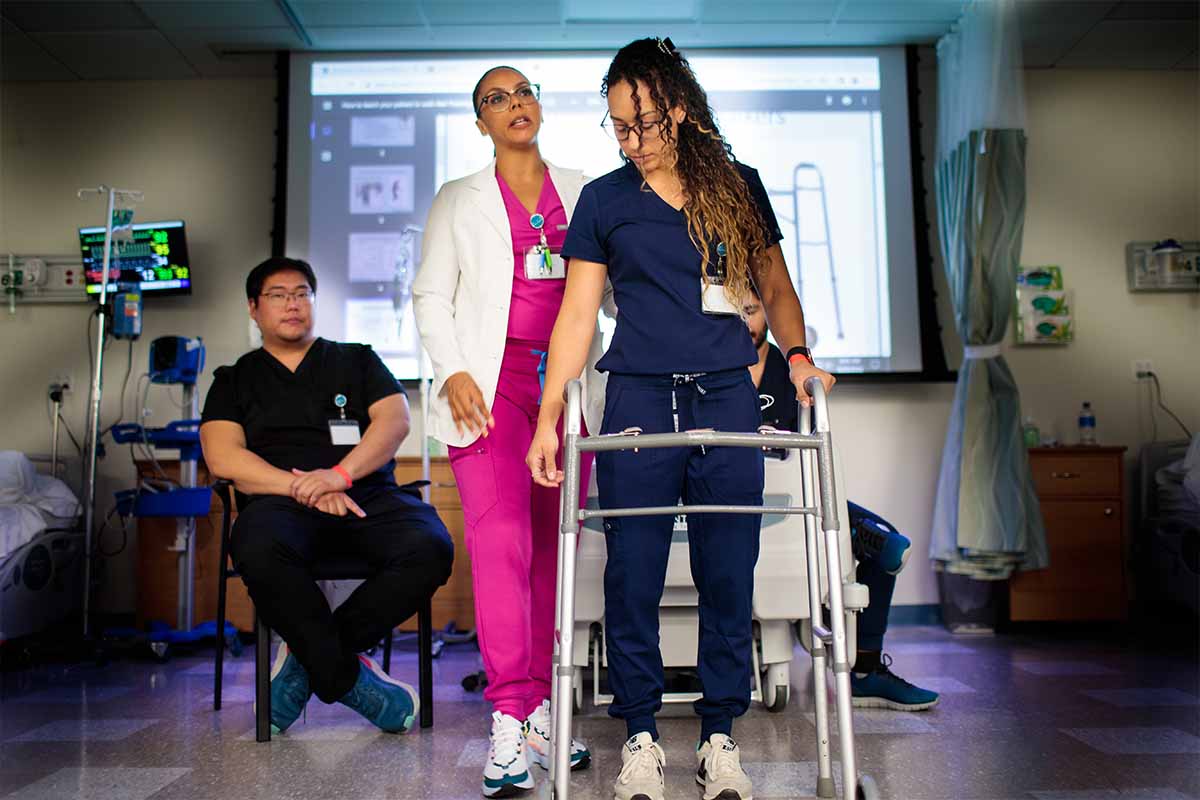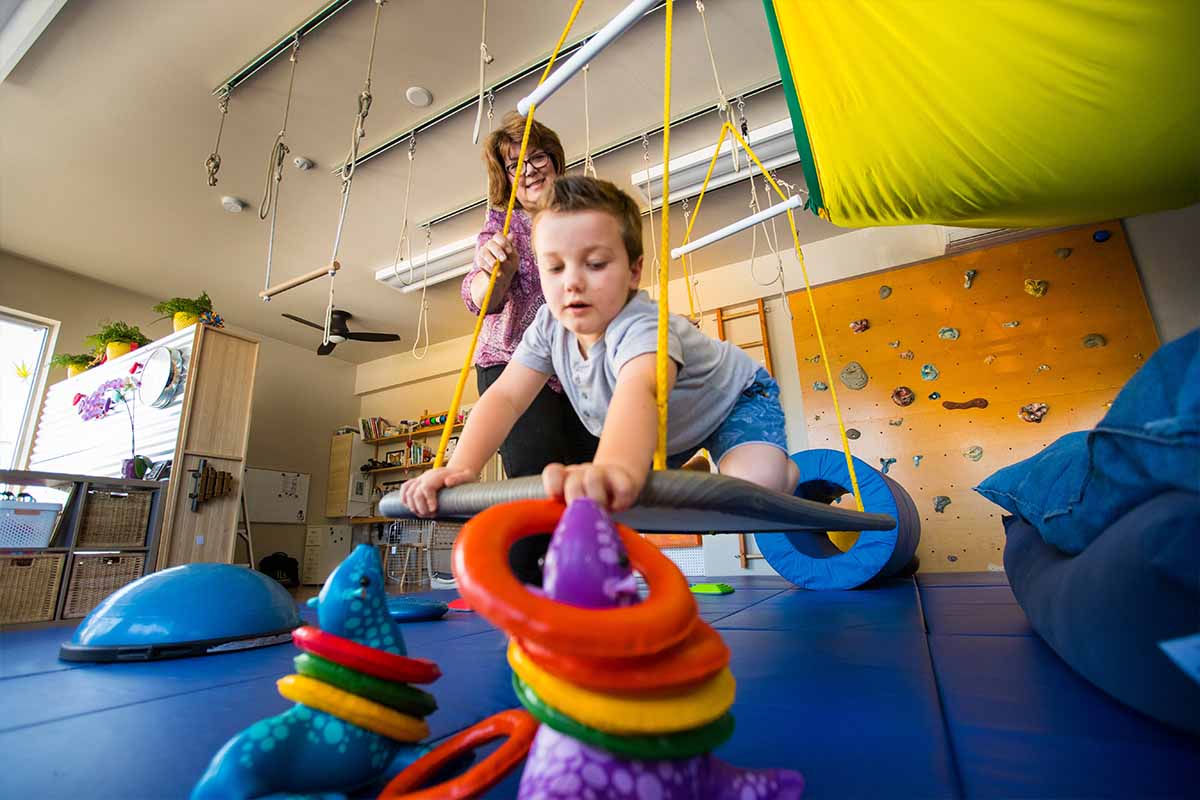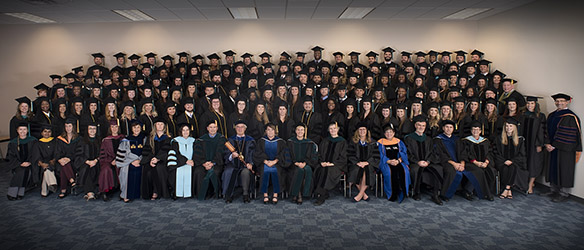
Part of what distinguishes USAHS’ entry-level Doctor of Occupational Therapy (OTD) degree from our Master of Occupational Therapy (MOT) degree is that our OTD students complete a capstone project. The capstone project is an opportunity for students to dive deeply into a topic that interests them within the OT field. At first, the process can seem both exciting and intimidating for students. To break it down, we spoke with Angela Blackwell, PhD, OTR, an associate professor of OT.


Dr. Blackwell says that in their third trimester, OTD students “start to think about a problem that exists in the clinic or in society that OT can address. Ideally, they find a problem that hasn’t been adequately explored.” The student refines their definition of the problem based on observations, conversations, and a review of OT literature on the topic.
Students might find a new angle on a traditional OT practice area, such as helping people with disabilities. Or they might look within emerging practice areas, such as working with people experiencing homelessness, forensic populations, young people in foster care, people with substance abuse issues, and much more. Here are examples of some recent OTD projects:
- Salina Jivan sought to understand the impact of social distancing on seniors during the pandemic.
- Nadim Batshon compared current programs that help former prisoners re-enter society with what the occupational therapy profession could offer.
- Nikki Nguyen, and Elizabeth Valera teamed up to create and implement a program to help teens in an emergency shelter regulate their emotions.
- Jessica Morgan, created a website and podcast that serves as a resource for OTs who are exploring unconventional areas of practice.
- Alyssa Garcia, identified a gap in mental health services for first responders – while they might have access to social services and psychologists, no one was addressing the impact of their work on regular, daily life.
- Christina Gonzolez focused on the therapeutic use of virtual reality (VR) with children with ASD plus intellectual giftedness (ASD+IG)
Step 2: Form a Capstone Team
Students assemble a capstone team that consists of:
- A doctoral coordinator
- A mentor, who may be an occupational therapist or other expert working in the student’s field of interest
- A site supervisor, who supports the student through the 14-week capstone experience process within the chosen setting
Of her role on the capstone team, Dr. Blackwell says, “I love seeing the students develop, and seeing our profession develop in new and interesting ways. I’m their cheerleader, on their team”
“I see them grow tremendously, gain confidence, and become experts in this area. I feel their pride.”
She adds that most OTD students aren’t accustomed to completing a project that is so self-directed and open-ended. “They’re used to handing in an assignment and getting a grade—but not having to rework something multiple times. So in the beginning, I set expectations that this will be an iterative process.”
Step 3: Brainstorm Possible Solutions
Next, the student brainstorms possible ways to approach their chosen problem. They have the option to develop and/or implement a program at a facility, conduct an onsite research study, write a scholarly paper, create more resources for OTs to work in their topic area, or other creative approaches—the possibilities are numerous. “What they choose depends on the student’s goals, personality, and access to facilities,” Dr. Blackwell says.
Students try to network and make connections with sites where they might want to conduct research or implement their program. Capstone team members can help facilitate connections, and USAHS has relationships with some sites that are happy to mentor multiple students over time.
This part of the process can be challenging for students who have lots of interests and ideas, Dr. Blackwell says. “Sometimes they freeze at this stage, so I try to not let them get overwhelmed. I advise them to keep the project small, and I urge them to trust me and trust the process.”
“I tell them that no matter what topic they choose, the capstone project is a valuable process.”


Step 4: Write a Preliminary Proposal
Students write a preliminary proposal, articulating the problem and solution that they’ve defined. Their capstone team members review this proposal and give feedback, guiding the student as they see fit.
During the Immersive Capstone Experience, students devote their time to completing their onsite fieldwork. During this time, they continue to gather information and ideas for their capstone project.
Step 5: Write a Full Proposal
Students dig in and fill out a full proposal, which includes an introduction articulating the problem, a literature review about the issue, a detailed description of the methodology the student will use in their project, and appendices. Their capstone team members look at drafts of the proposal to make sure it’s developing in the right direction.
Step 6: Defend the Proposal
Students defend the proposal by presenting it to an audience that can include any member of the USAHS community, as well as the student’s friends and family. Members give constructive feedback. “We don’t let students defend it before they’re ready,” Dr. Blackwell says. “We keep working together until the proposal is in good shape.”
“It’s a proud moment to see the students defend their proposal with confidence.”
Step 7: Conduct Research, Ideally Hands-On
After the proposal defense, the students begin the capstone experience, which is the hands-on portion of their project—with site visits, interviews, surveys, and more. “The ideal is boots on the ground, working with the population,” says Dr. Blackwell.
Step 8: Present the Findings
Just before graduation, students present the findings of their capstone project in a poster, and they deliver an oral presentation. The whole USAHS community is invited. Dr. Blackwell characterizes the presentation as “another proud moment.” She says, “The students become competent clinicians who can solve big problems. It’s exciting to see them come full circle—to see this application of evidence and theory that far exceeds that of their MOT peers. They gain a command of the profession and the topic they chose.”








